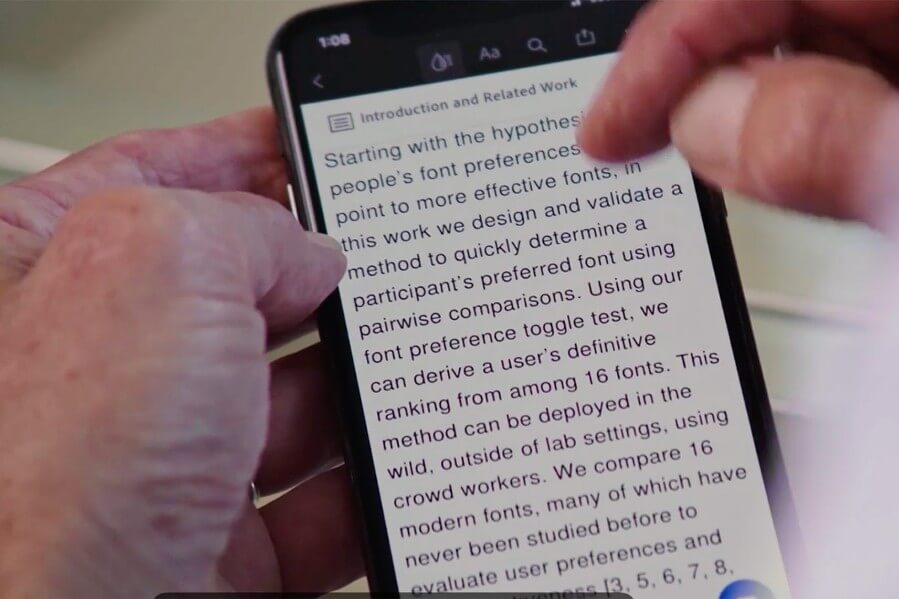The results were published recently in the journal ACM Transactions on Computer-Human Interaction (TOCHI).
The study, led by a collaboration of researchers from academia, industry, and the Readability Consortium that’s housed at UCF, found that changing font to one better suited to an individual resulted in a 35% increase in reading speed while maintaining comprehension. Researchers compared individuals’ reading speeds and comprehension levels when reading text in various fonts.
The Readability Consortium is a collaboration among UCF, Adobe, Readability Matters and Google to research digital readability using individuated typography to improve reading speed and comprehension.
The study also showed that people didn’t always know what their best fonts were, as personal preference for fonts did not necessarily predict reading speed, says study co-author Ben Sawyer ’14MS ’15PhD, director of the Readability Consortium and an associate professor in UCF’s Department of Industrial Engineering and Management Systems.
“These results emphasize that personalization is key and encourage future work in creating tools and conducting research that help readers discover the format that optimizes their personal reading experiences,” Sawyer says.
For the study, a diverse group of 352 participants, ages 18 to 71, were tasked with reading digital text on their personal devices. Sixteen common fonts used online, in newsprint and in PDFs were tested.
Shaun Wallace, Adobe Research intern and Brown University computer science doctoral candidate, led the study.
“This research shows that we should start looking at fonts the way we look at reading glasses,” Wallace says. “With the right font, we can reshape how an individual sees text to help them read faster. This research is just beginning, as we can explore all facets of how to redesign text to match an individual’s needs.”
The Readability Consortium and Virtual Readability Lab lead UCF’s research on digital readability using individuated typography to improve reading speed and comprehension. Readability describes the ease with which people can read and understand text. It is dependent on presentation factors, such as font and spacing. Individuated typography involves the personalization of font or reading experiences.
The consortium is conducting various digital readability studies to investigate the effects of how manipulating text characteristics such as font type, size, and spacing may boost reading speed and comprehension among both adults and children.
The efforts contribute to the consortium’s goal to build models and personal tokens that will match readers to the font format that will optimize their overall reading experience by improving reading speed and comprehension.
People can take the five-minute Virtual Readability Lab tests to discover the font and spacing that will help them read better.
Sawyer is the director of UCF’s Readability Consortium and Virtual Readability Lab, which address how personalization can improve reading efficiency and speed, and LabX, an applied neuroscience group focused on human performance. He is also a joint faculty member of UCF’s Institute for Simulation and Training, School of Modeling, Simulation, and Training. Sawyer received a doctorate in human factors psychology and a master’s degree in industrial engineering from UCF. He completed his postdoctoral studies at MIT.


